Beware of landmines, said the sign as we turned onto the A14, a lonely dirt road that leads from Nyamapanda border post, between Mozambique and Zimbabwe, to Mutare where we were headed.
We were homeward bound, road weary and verging on broke — and this sign was completely disconcerting. Clearly, this was not a road where you simply stopped and strolled off into the bushes for a pee.
Politics is an inevitable passenger on a road trip through Africa, but it’s been more than 40 years since the Zimbabwean war of Independence and we were still being asked to beware of landmines? And how exactly do you beware of a landmine? Do not stop to ask it directions? Ignore it in a bus queue?
Since Mozambique was declared free of landmines in 2015, I’d assumed Zimbabwe was the same. But not at all. The landmines here were planted by forces of the Rhodesian government under Ian Smith in the late 1970s to destabilise freedom fighters from the Zimbabwe African National Liberation Army as well as the Liberation Front of Mozambique, and are only now being removed and destroyed.
We passed a razor-wired enclosure of tents and ambulances that was the main camp of the Mines Advisory Group (MAG), a global humanitarian and advocacy organisation that finds, removes and destroys landmines, cluster munitions and unexploded bombs in conflict zones. Helping children get back their future, as the organisation puts it.
Since 1989, the MAG has helped more than 20 million people in 70 countries rebuild their lives and livelihoods after war — and this forgotten stretch of Zimbabwe is finally getting its turn.
What a sad few hours’ drive it was through this remote, empty and deeply rural part of Zimbabwe, where it felt as if everybody had left. We encountered almost no other traffic for hundreds of kilometres, except for the odd car, bicycle or motorbike. There was no cellphone signal and the villages were far apart with sparse and empty shops.
Though the road itself has been declared safe to drive, there were pegs and tape indicating specific pathways into the bush that were safe to walk. I read that more than 150,000 cows have been blown up by landmines since they were planted here. Goodness knows how many people have died.
Determined to make the best of it
We had crossed from Malawi into Mozambique the day before, had been predictably fleeced by traffic cops and had savoured our way towards Tete, stopping on the roadside for baobab views, leftovers and a slug of warm box wine.
We’d played singalong to loud 1970s disco music to keep up morale and belted our way into the city, crossing the old and new bridges over the Zambezi River.
The Tete Ferry Sun was a truly welcoming place to spend a night. A comfortable and spacious hotel on the banks of the Zambezi River, with a driveway lined by gorgeous travellers’ palm trees and sunset views over the bridge that is named after former Mozambican president Armando Guebuza, whose vast $2.2-billion fishing project scandal triggered an economic crisis in 2014.
On this day there was scant jollity in the car. We drove in silence and, by late afternoon, realised we’d never make it to Mutare as we’d originally hoped. So we stopped at Nyanga in the eastern highlands.
The weather got colder and colder as we climbed up into the hills, and by the time we checked into a villa at the legendary Troutbeck Resort, the temperatures had dropped to almost freezing and the rain was coming down. Sometimes heavy politics and deep angst call for a party. What a great night we had. We made a fire inside our villa, cooked delicious food and cranked up the music, ending up dancing around full of whisky-fuelled hope for a brighter tomorrow.
I had last visited Troutbeck Resort Inn in 2014 when it was rather rundown and only had electricity two days a week. Now it’s all solar power and manicured lawns surrounding a gorgeous lake, and the hotel and adjacent timeshare villas have been totally renovated and spruced up.
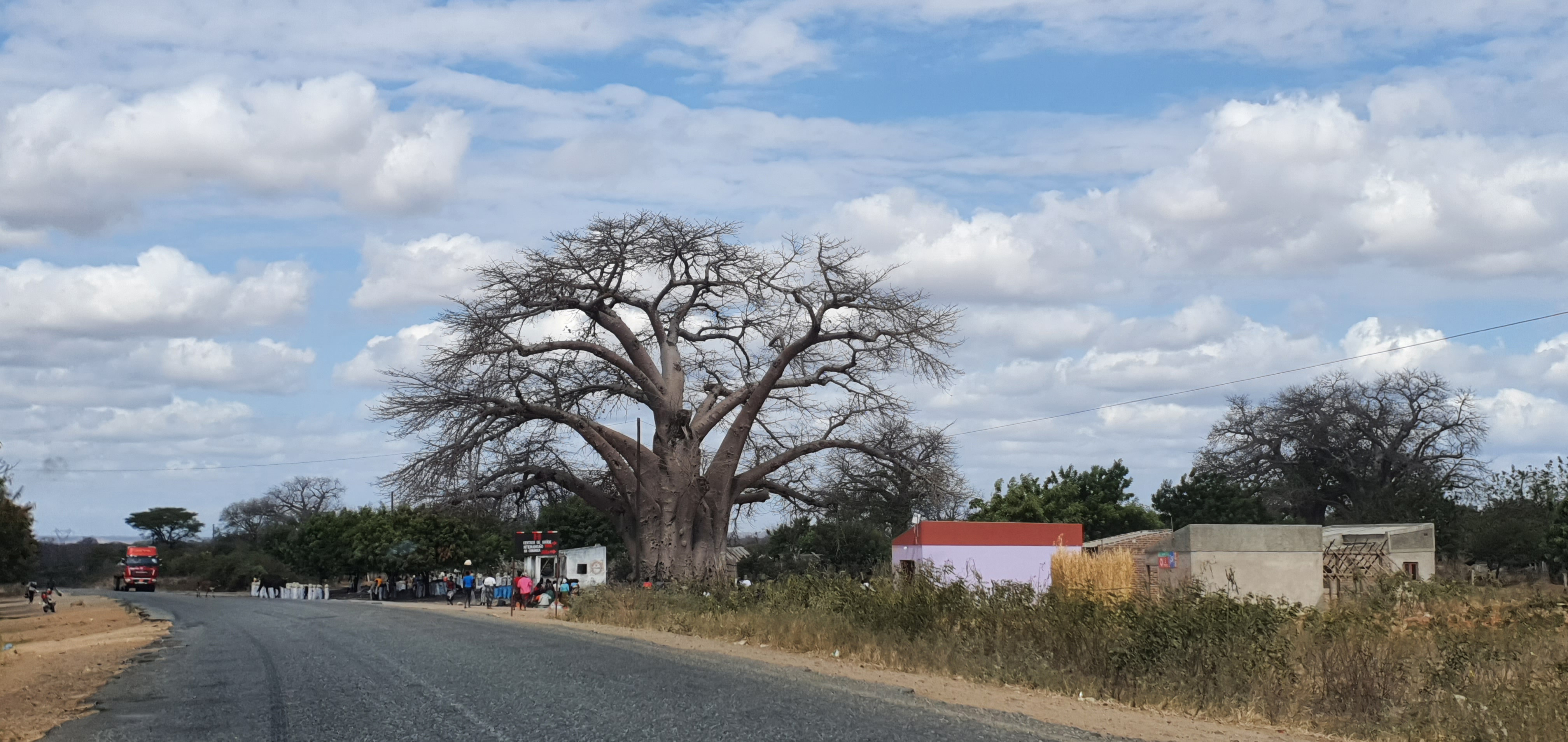
A baobab at one of the isolated villages on the road from Mozambique to Mutare in Zimbabwe. (Photo: Bridget Hilton-Barber)
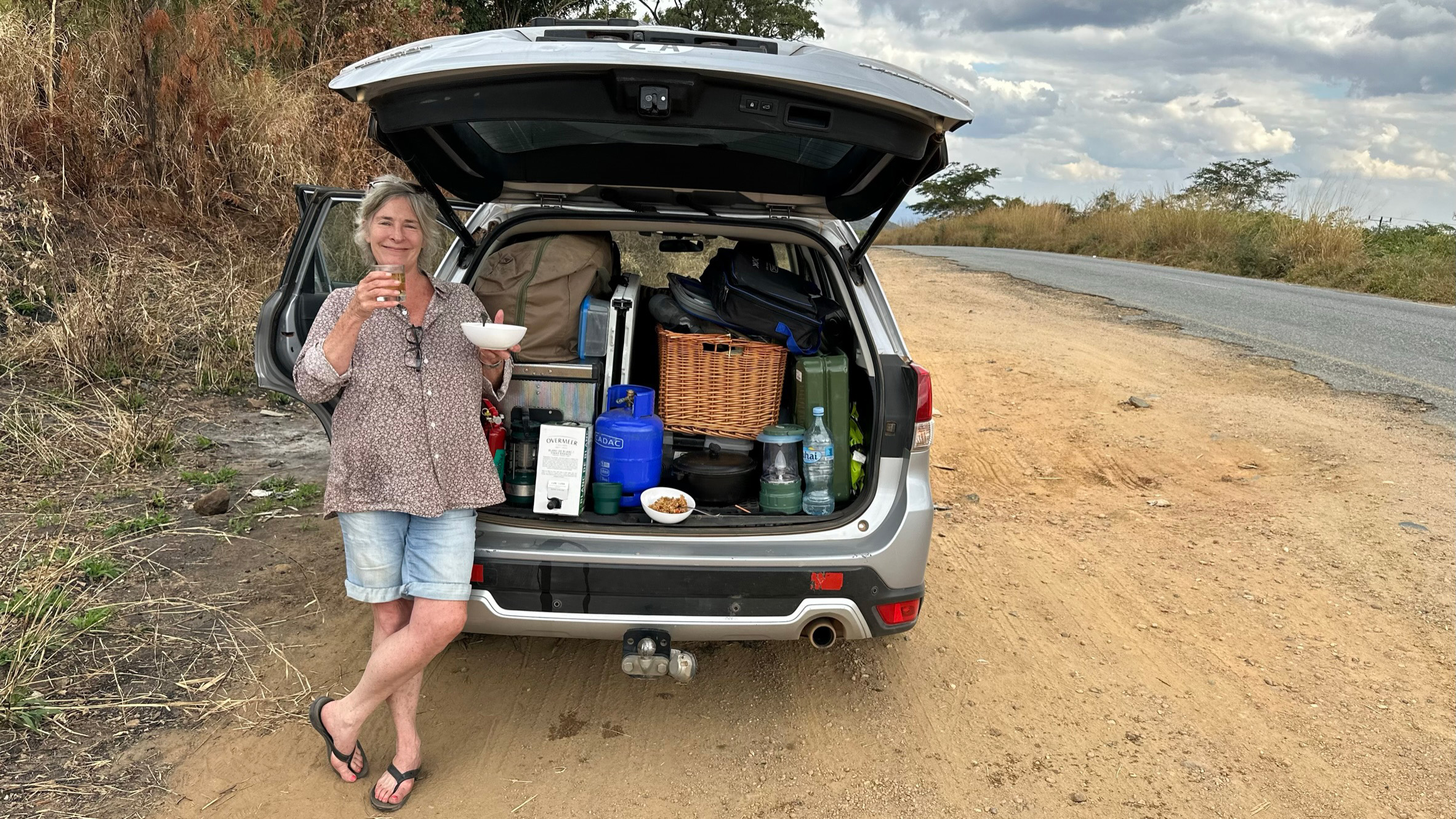
A roadside stop to enjoy leftovers and views of the baobabs and whaleback rocks. (Photo: Bridget Hilton-Barber)
Entering a sacred space
From Nyanga to Gonarezhou in the southeast of Zimbabwe has to be one of the most beautiful drives in the world, beginning with the aptly named World’s View, which reveals distant mountains and granite outcrops called amadwalas or whalebacks.
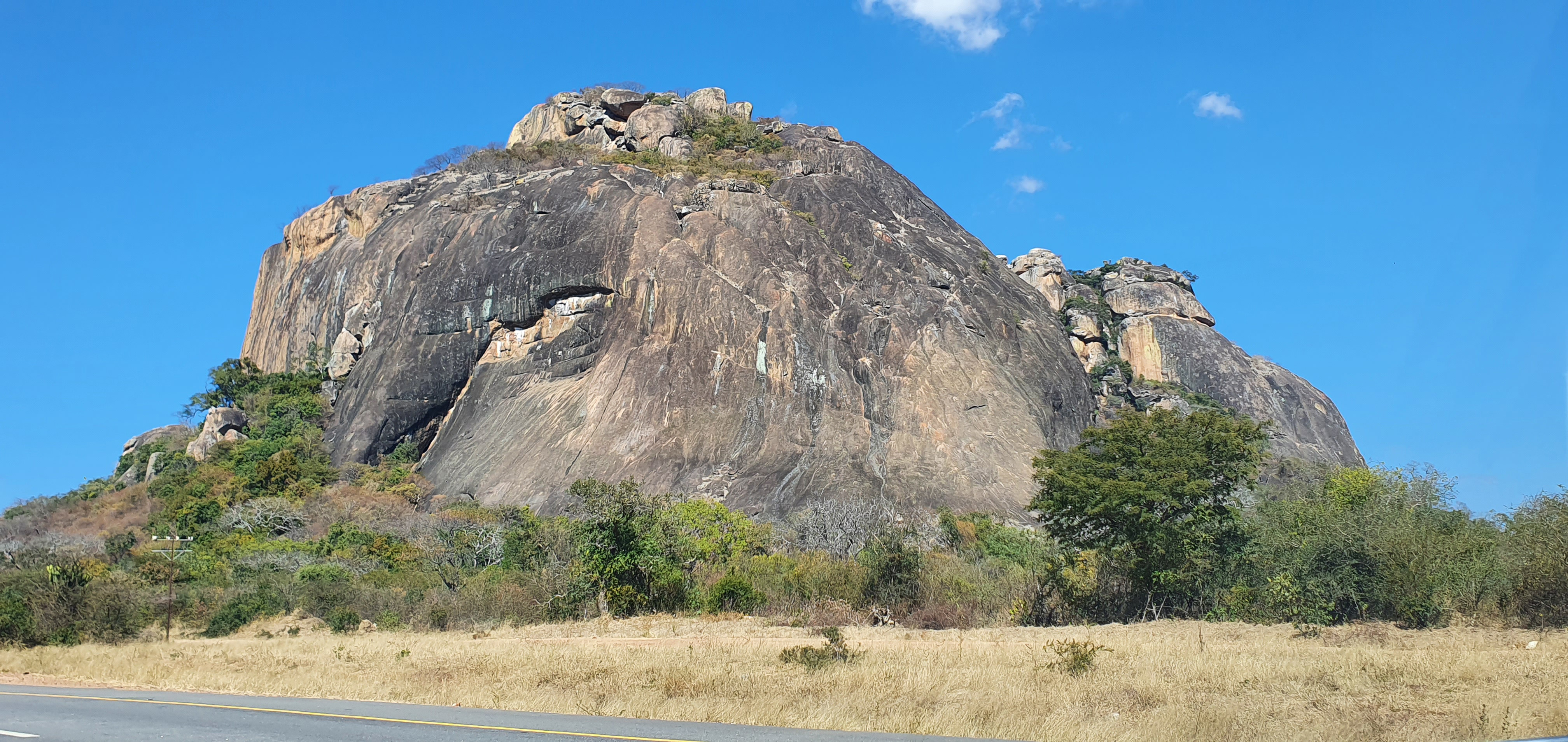
A whaleback granite rock outcrop, also called an amadwala, on the beautiful road from Nyanga to Gonarezhou in the southeast of Zimbabwe. (Photo: Bridget Hilton-Barber)
It was a pleasant stretch to Mutare in the cold and rain, and although there was only a pocket or two of electricity, the shops seemed well stocked and the ATMs that were working spewed out crisp new US dollar notes. The fuel stations across Zimbabwe only accept dollars for petrol, or coupons, with very few places taking credit cards. There were plenty of roadworks as we drove to Masvingo, a sign that the area is definitely being earmarked for development.
Thirty-eight days into Our Epic Road Trip, we stepped through a ray of dawn sunlight into another portal entirely — the sacred space of Great Zimbabwe.
This World Heritage Site in the Mutirikwi valley near Masvingo dates back to the 11th century, when it was the capital of a thriving civilisation that, in the words of archaeologist and art historian Peter Garlake, displayed “an architecture that was unparalleled elsewhere in Africa or beyond”.
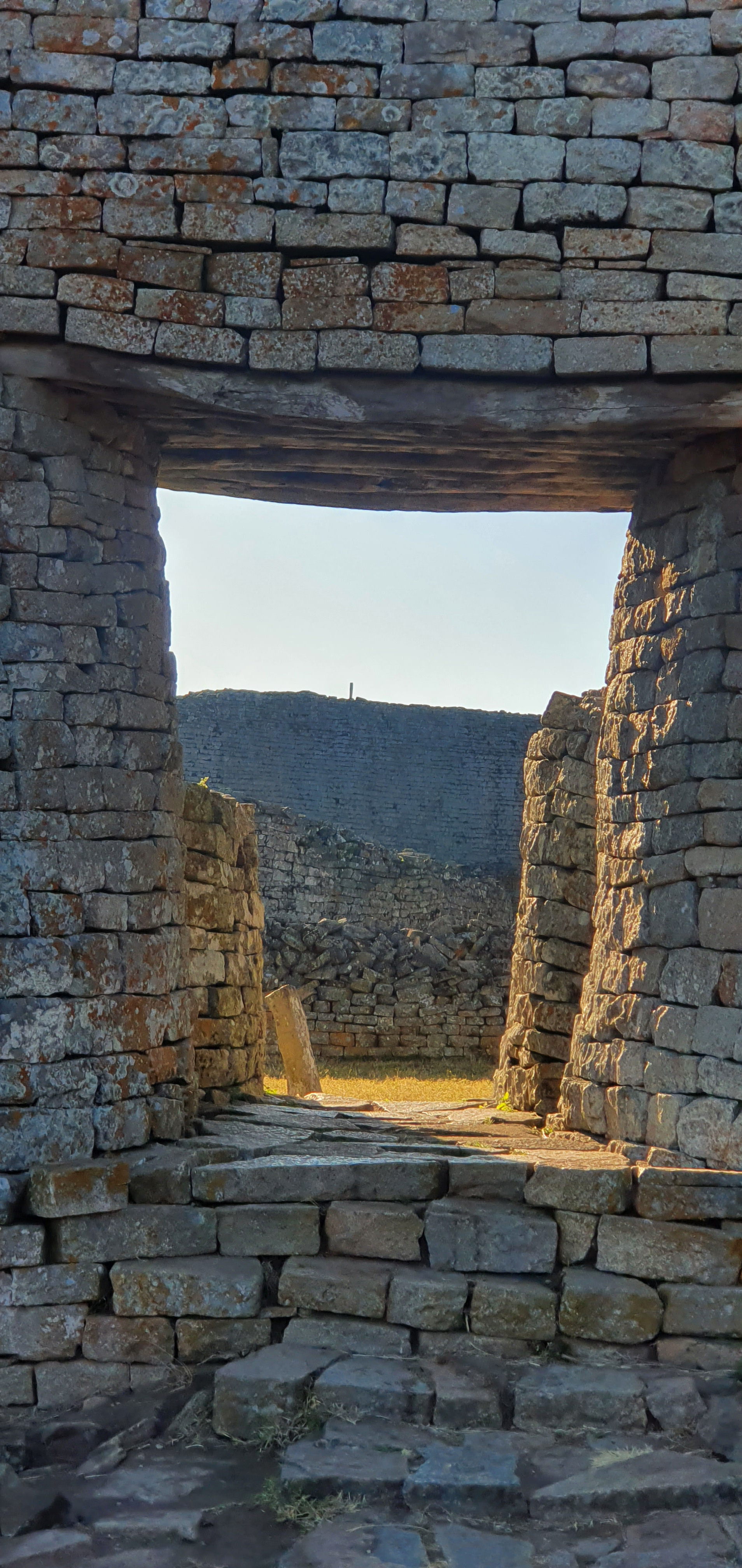
Great Zimbabwe is a portal into the sacred space of the country. (Photo: Bridget Hilton-Barber)
What a magnificent and profound space. The ruins of Great Zimbabwe are divided into three main architectural areas: the Hill Complex, the oldest, which was occupied from the ninth to the 13th century, the Great Enclosure, which dates to the 14th century, and the Valley Complex, which has evidence of human settlement in the 19th century.
We saluted the aloes and euphorbias that guard this majestic valley of the ancients, we walked along cool and narrow pathways through the conical buildings, and we clambered up through narrow passageways that led to the Afro Acropolis — the spiritual and religious centre of the city.
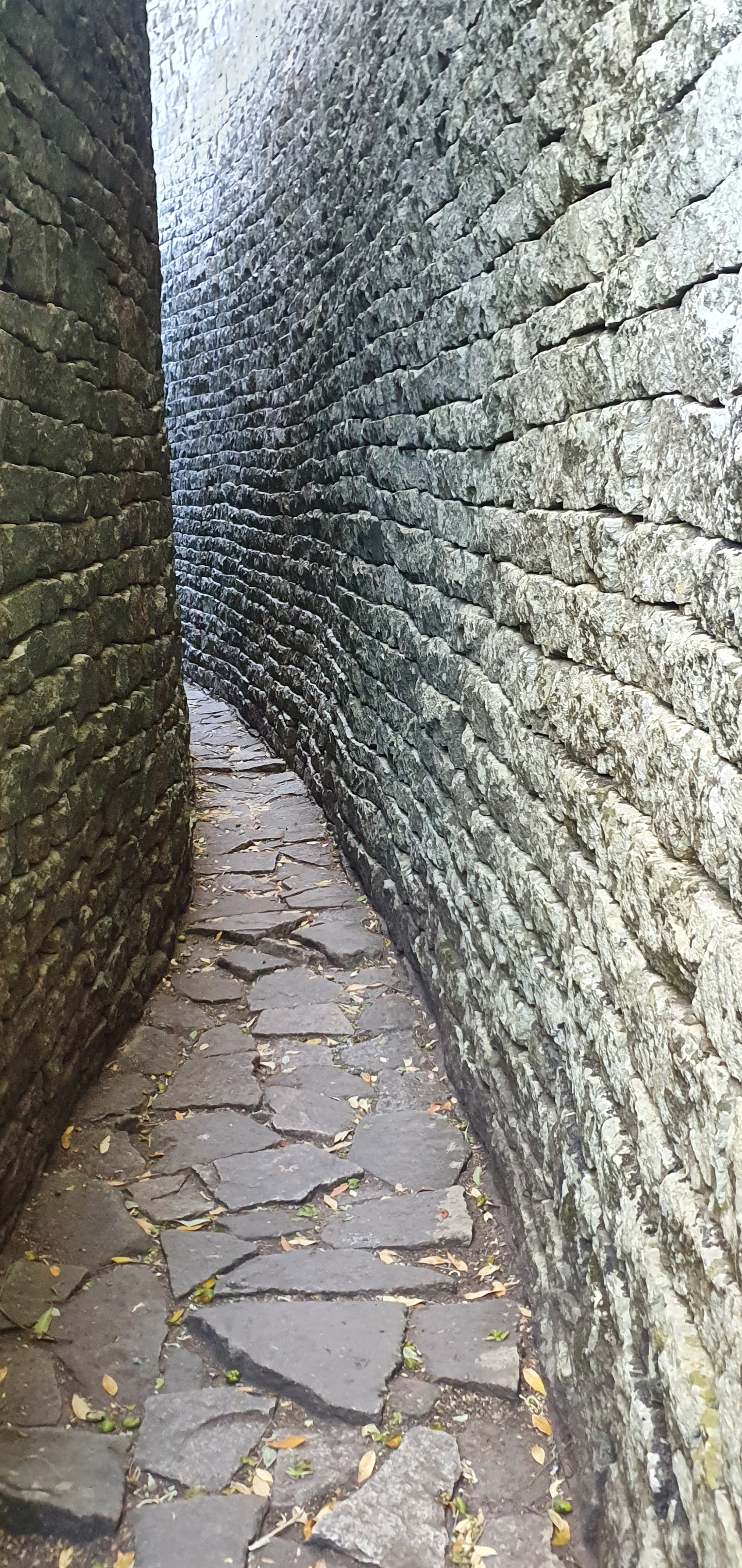
Great Zimbabwe has cool, narrow pathways through its ancient conical structures. (Photo: Bridget Hilton-Barber)
At its peak, Great Zimbabwe had some 10,000 inhabitants, and archaeological excavations have revealed glass beads and porcelain from China and Persia and gold Arab coins, which testify to the extent of long-standing trade with the outer world.
We were completely alone there as the sun rose and the birds sang. It was only a few hours later that our poetic ramblings were interrupted by the cheerful sounds of a busload of school kids on a cultural outing.
We camped that night in the campsite at the Great Zimbabwe Hotel, which has also been tarted up in the past few years. We had the dregs of our Gold Blend Black, a very good local whisky, home-cooked food and company in the form of friendly fellow travellers. We sat around the fire contemplating the juxtaposition of beauty and tragedy that is Zimbabwe.
Our next stop would be Gonarezhou National Park, and then we would be making our way home, at last. DM


